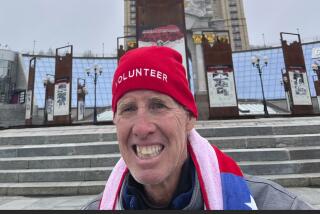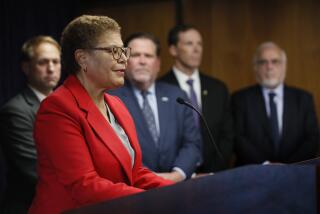New Zealand mosque suspect linked to white nationalist internet manifesto
Described as a 28-year-old white nationalist from Australia, the man who authorities say went on a terrorist rampage at two Christchurch, New Zealand, mosques Friday left behind a vitriolic 74-page manifesto, a litany of internet evidence and a horrific string of 49 bodies to mark his twisted crime.
New Zealand and Australian authorities initially released few details about the suspect now charged with one count of murder. The assailant was armed with assault-style rifles and a helmet camera as he gunned down Muslim men, women and children attending weekly prayer services.
The shooter, who livestreamed the horrendous acts, identified himself as Brenton Tarrant and is said to have been a personal trainer who left Grafton, a small town in New South Wales, to see the world. While abroad, the manifesto said, he grew to so hate immigrants, and in particular, Muslims, that he became consumed with a desire to kill them by the score and seek to inspire others to do the same.
In the document, titled “The Great Replacement,” the writer said he called himself a fascist but not a member of any specific white nationalist organization.
At the same time, he championed such killers as Dylann Roof, the young white supremacist sentenced to death for slaughtering nine African Americans in a church in Charleston, S.C., in 2015; and Anders Breivik, the far-right Norwegian terrorist who in 2011 killed eight people by detonating a van bomb before shooting dead 69 people, many of them teens, at a summer camp.
The Christchurch suspect also asserted he was not a Nazi, but written on a rifle that’s seen in the gunman’s livestreamed video is the number 14 — a reference to a white supremacist slogan conceived by neo-Nazi David Lane, according to the Southern Poverty Law Center.
“What it represents,” said Brian Levin, director of the Center for the Study of Hate and Extremism at Cal State San Bernardino, “is the ease that these kinds of tropes can be transferred internationally now.”
The shooter’s plan began and ended online, authorities say. That’s no coincidence — his goal from the start, the manifesto said, was to spread his ideas of militancy by using the media.
The title of the suspect’s document is a reference to a book with the same name written by French author Renaud Camus, who argues that Europe is being taken over by immigrants.
“The title represents this sort of fixation on the possibility that white, European society will be overrun by immigration and by others,” said Oren Segal, director of the Anti-Defamation League’s Center on Extremism. “It used to be that white supremacists were talking about maintaining their control and now they’re talking about maintaining their existence.”
RELATED: 49 killed in terrorist attacks on two New Zealand mosques; suspect charged with murder »
In the manifesto, Candace Owens, an American conservative commentator, is identified as the person who most influenced the writer.
Owens responded on Twitter on Friday condemning the attacks on the worshipers.
In addition, the manifesto describes President Trump as “a symbol of renewed white identity and common purpose.”
In tweets Friday, Trump said “49 innocent people have so senselessly died” and expressed his “warmest sympathy and best wishes” to the people of New Zealand. He later said he doesn’t see an increase in white nationalism. “I think it’s a small group of people,” he said, in response to a reporter’s question.
In Grafton, Australia, Big River Gym manager Tracey Gray told ABC News that Brenton Tarrant showed determination during his lengthy workouts.
“He was in the gym for long periods of time, lifting heavy weights. He pretty much transformed his body,” Gray said.
According to the manifesto, he saved money for his travels by investing in Bitconnect, a cryptocurrency.
In 2017, while traveling Western Europe, the document claims, his mindset changed. It says that he was instilled with the growing desire to use violence after a trip to France, when he became convinced that the country was being “invaded” by “nonwhites.”
It was around that time that he began planning an attack, according to the manifesto.
Initially, it said, he planned to move to New Zealand temporarily for “training” purposes. But he started to consider opening fire on innocent worshipers in two Christchurch mosques three months before the attack.
An attack in a country isolated from mass shootings, the writer declared, would show that “nowhere in the world was safe.”
More to Read
Sign up for Essential California
The most important California stories and recommendations in your inbox every morning.
You may occasionally receive promotional content from the Los Angeles Times.












